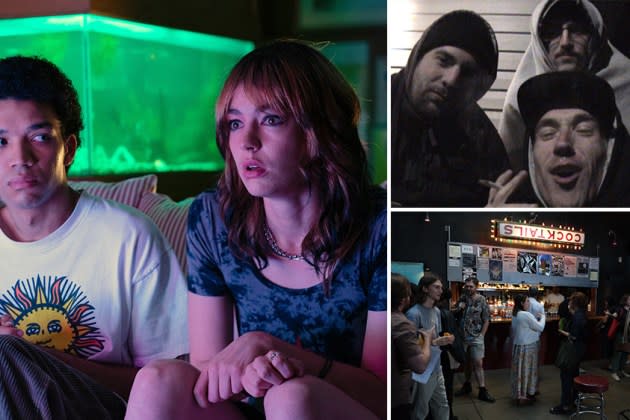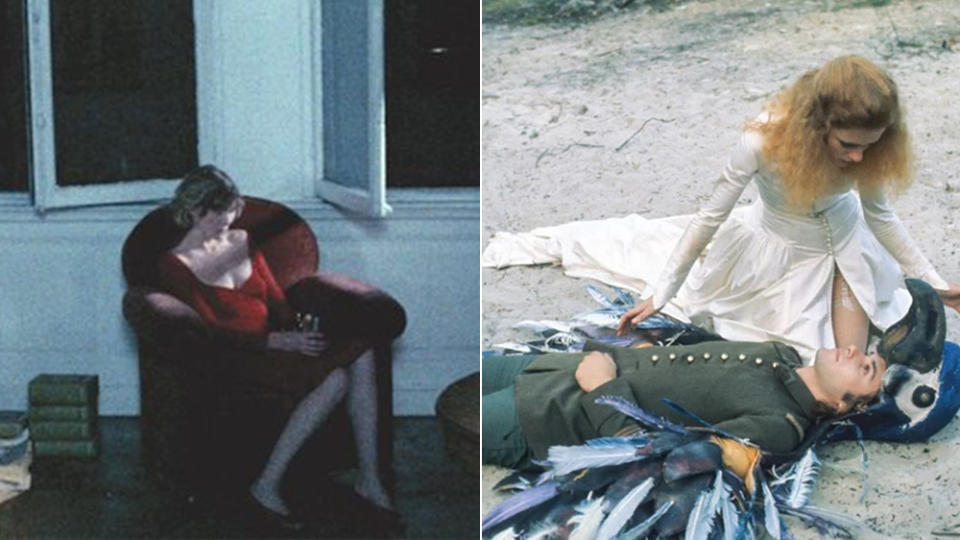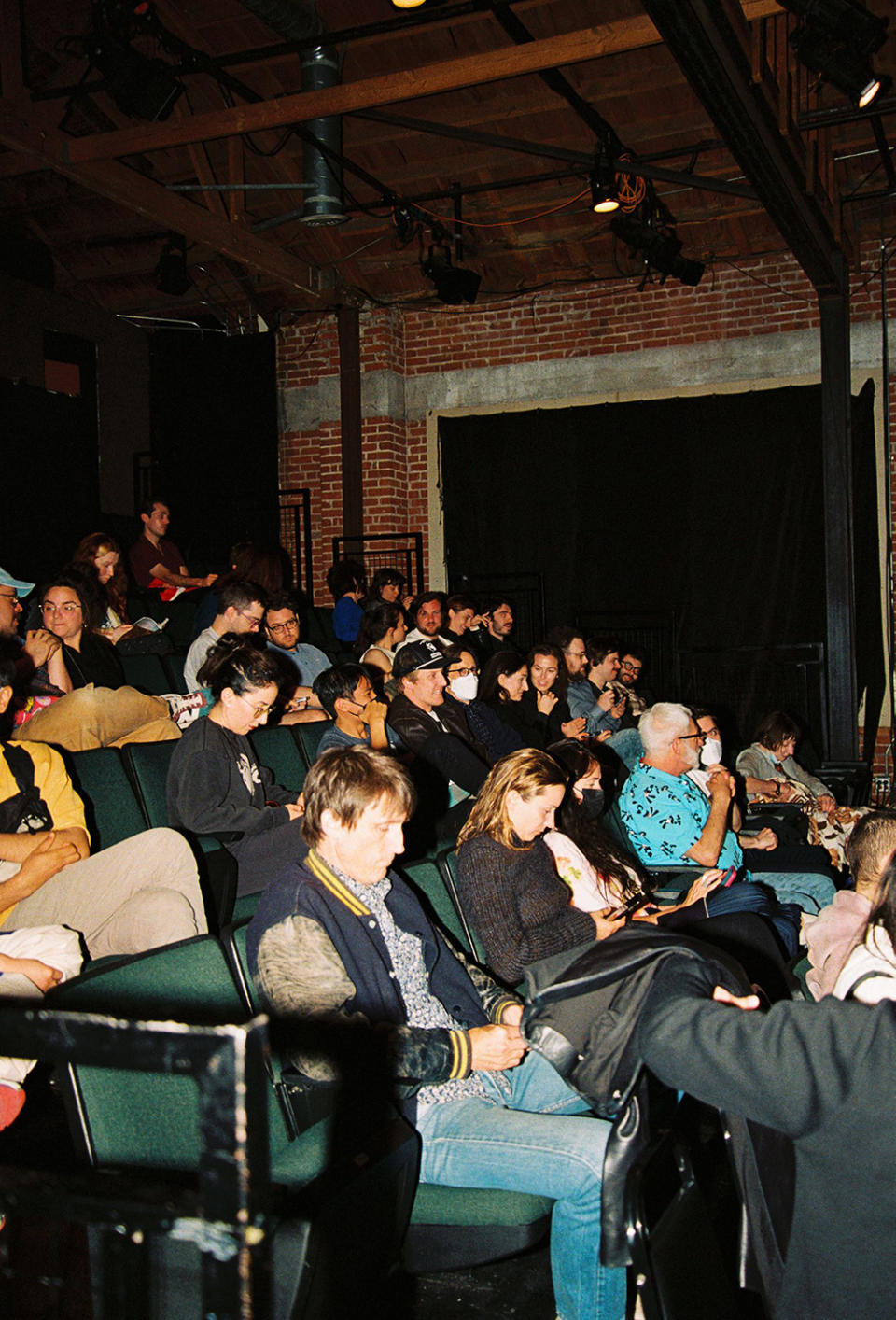The Los Angeles Festival of Movies Prepares to Launch, Ready to Prove the City’s Appetite for Independent Film

Awards courting, auctioning among distributors and corporate-sponsored parties can really take the “film” out of “film festival,” with moviegoing sometimes becoming an afterthought to more market-oriented activities at the industry’s legacy gatherings. The Los Angeles Festival of Movies is not one of those film festivals.
Launching this coming weekend, LAFM is screening an eclectic and diverse slate of independent features across a trio of theaters on the east side of Los Angeles, a world away from the shadows of studio lots and agencies. The festival is co-presented by the world cinema streamer Mubi and the non-profit Mezzanine, which has been programming in L.A. for more than two years, screening contemporary indies, avant garde work and underseen repertory features for an audience that has grown to trust its adventurous taste.
More from Variety
'The American Society of Magical Negroes' Star Justice Smith on His Bold New Film, D&D and PokemonGo
Los Angeles Festival of Movies Sets Inaugural Program With 'I Saw the TV Glow,' Kim Gordon Talk
'I Saw the TV Glow' Review: Jane Schoenbrun's Eerie Ode to Adolescent Television Obsessions
LAFM represents a new endeavor for Mezzanine: providing a sustained weekend of contemporary programming for a city that has been missing an event dedicated to elevating independent productions, especially since Film Independent’s Los Angeles Film Festival shuttered operations in 2018 after 23 years.
“We’re not trying to get people who their job at the studio is going to pay for them to come to this festival all day on a weekday,” says Sarah Winshall, a film producer at indie banner Smudge Films and co-founder of LAFM. “We’re trying to get people who come here after school or after work and love watching movies.”
“It was important to have a film festival that was free of the usual distractions of the commercial film industry,” says Micah Gottlieb, LAFM co-founder and Mezzanine artistic director. “This is not explicitly a market-driven film festival, though there are some films that are without distribution.”
When Winshall and Gottlieb first publicly announced LAFM in February, nobody else was involved with organizing at the time. But over the past six weeks, several volunteers and advisors have joined the team to bring the inaugural edition to life. The festival is now just two days away, as the group puts the final logistical touches on a lineup featuring West Coast premieres of Sundance, Locarno and Rotterdam selections, as well as some old masters, namely restorations of films by Chantal Akerman and sculptor Niki de Saint Phalle.

“As great as L.A. is for revival cinema right now, it’s still challenging for new independent films to get the same amount of attention or foothold here,” says Gottlieb, who cites the New York Film Festival, Bologna’s restoration-centric Il Cinema Ritrovato and the True/False documentary fest in Columbia, Mo. as inspirations for LAFM’s aspirations toward sharp curation and regional personality. “This is a time of year that’s really fertile for those kinds of movies to get a groundswell of interest, whether or not they have distribution or attention or hype already. We were really interested in serving movies that, for one reason or another, have not made it to L.A. yet.”
The mission statement seems to have served the festival well so far. A visit to the official website reveals plenty of sold-out notices already across the festival’s 14 screenings. Winshall explains that the compact calendar was a purposeful decision to set the event up for success. The fest runs four days; notably, Thursday and Friday only feature evening screenings — an accounting for the curious working audience that the festival hopes to attract once they’ve clocked out.
“I felt pretty passionately about not trying to do too much … You could go to all the screenings if you wanted,” Winshall says. “There were very few movies that said no. We were trying to find the films that wanted this festival. Maybe we could book some earlier in their lifecycle in the future after we’ve done some proving. But we’re not getting too caught up in the weird, industry elbowing-each-other-out for a premiere.”
Even so, LAFM gets to flex one world premiere: its closing night film “Rap World,” starring alt comedian Conner O’Malley, who has spent the past decade honing an abrasive, outré digital aesthetic on the internet. His latest work, co-directed with Danny Scharar, doesn’t fit the confines of traditional commercial filmmaking. Set in 2009 and shot in a parking lot on a period-appropriate camcorder, the film blasts by with a runtime just under an hour.
“It is truly an independent comedy that is extremely funny. It has a huge audience,” Gottlieb says. “Conner’s basically self-distributed his work for the last number of years. This wouldn’t normally be exhibited in a theatrical setting, but it has a broad appeal and is representative of a particular milieu of image-making today.”
O’Malley also plays a small but memorable role in “I Saw the TV Glow,” the festival’s most high-profile title and its opening night film. Directed by Jane Schoenbrun and co-produced by Winshall’s Smudge Films, the horror feature, which explores a fixation on ‘90s media and an emerging trans identity, debuted at Sundance. A24 is releasing it in theaters in May. The LAFM slate, curated by Gottlieb, also includes titles like “Gasoline Rainbow,” a semi-improvised road film directed by Bill Ross IV and Turner Ross (festival co-presenter Mubi is distributing), and “The Human Surge 3,” an adventurous experimental feature shot with a 360-degree camera that made a splash out of last year’s fests in Locarno, Toronto and New York.
A series of shorts have also been curated by the operators of Now Instant Image Hall, a 40-seat microcinema and bookstore that recently relocated from Highland Park to Chinatown. Two screenings of the program will be held at the venue, not far from 2220 Arts + Archives in Historic Filipinotown, Mezzanine’s usual hub and the primary location for the festival’s screenings and panels. Opening and closing night are just a 15-minute drive away at Vidiots in Eagle Rock, the 271-seat theater and video store that reopened just a year ago. The venue’s executive director, Maggie Mackay, served as senior programmer for the Los Angeles Film Festival for the majority of its lifespan.

One crucial unifying detail between the three venues: each is outfitted with a bar for patrons to mingle at after screenings. Gottlieb and Winshall first met in the 2220 Arts + Archives lobby after a Mezzanine screening of Marguerite Dura’s 1972 film “Nathalie Granger.” For Winshall, the adjacent gathering spaces account for an absence that she noticed as a young cinephile in Los Angeles, reveling in the programming of venues like the New Beverly but left without a place to convene and discuss after screenings.
“You don’t have to go find it or know the secret. You can just leave the room. Everybody’s there,” Winshall says. “I’ve had a lot of people ask me, ‘What, no online component?’ Of course not! That is not what this is. This is for people to come to the movies.”
“Theaters are so spread out all over the city and there isn’t any local press other than the Los Angeles Times, which occasionally will cover repertory and review independent films,” says Gottlieb, who grew up in Los Angeles before working in the independent film industry in New York for several years. “In some sense, L.A. has always had this lack of a robust community for independent film that exists outside of the Hollywood commercial.”
The hope is that LAFM can help foster that culture, though both Gottlieb and Winshall push against the prospect of the festival growing tendrils beyond that. Even if auspicious ticket sales end up leading to another edition next year, the two maintain that the festival should remain a fluid arrangement — ready to change if it better serves the films.
“This is an opportunity to start fresh. We see ourselves as a small regional festival in L.A. and that’s something that we want to maintain,” Gottlieb says. “We want to show that independent film culture — and film culture, in general — is not a static thing. It’s always changing. People are taking risks all the time. That’s what keeps it fresh and exciting for us. We hope that the festival will maintain that energy and spirit.”
“I’d like to avoid feeling like an institution. In five years, I hope no one thinks of us as ‘an institution,’” Winshall says. “Let it continue to serve a purpose.”
(Pictured above: Justice Smith and Brigette Lundy-Paine in “I Saw the TV Glow,” “Rap World,” the lobby of 2220 Arts + Archives)
Best of Variety
Sign up for Variety’s Newsletter. For the latest news, follow us on Facebook, Twitter, and Instagram.


